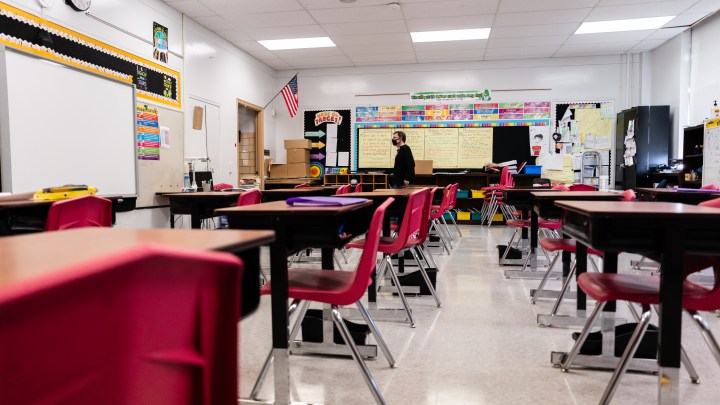
Schools’ creditworthiness could be challenged by new costs, report says
Schools’ creditworthiness could be challenged by new costs, report says

If you or I want to borrow money to, say, buy a house, we apply for a loan, and the bank looks at our creditworthiness. School districts work in much the same way; if they want to build a new school, add air conditioning or a science lab, they can turn to the debt markets to raise money.
When a district does that, loans are based on a rating from one of the big credit agencies. Generally, school district debt has been seen as a pretty solid investment. But a new report out this week from credit agency Fitch Ratings says that after dealing with a pandemic, schools have some new things to worry about when it comes to borrowing.
One reason school district debt is considered a good bet is that school funding from state and local governments is stable.
“States within their own constitutions have an educational mandate,” said Ashlee Gabrysch, a director at Fitch and author of the new report.
So, if you lend money to a school, it’s probably good for it. But part of Gabrysch’s job is to consider both the revenue and costs schools have and how that affects their creditworthiness. And, she said, schools are facing a whole bunch of new costs — like teachers who want to get paid more and are willing to walk if they don’t.
“We had this pandemic, that, you know, threw in a ton of other variables, including people rethinking what they wanted their workplace to look like, and voting, essentially, with their feet,” Gabrysch said.
Schools have to do more to compete with the private sector in order to keep teachers in the classroom, Gabrysch added. That can include building better classrooms.
“What bonds can pay for is changes in conditions, right?” said Jannelle Kubinec, chief administrative officer at the education nonprofit WestEd. “So, you know, you can upgrade facilities and put in new laboratory spaces that attract students and make it better for teaching.”
Attracting students is another concern. Miami-Dade County Public Schools is the fourth-largest district in the country. Still, enrollment has gone down in the last couple of decades, and each student gone means less revenue.
Ron Steiger, chief financial officer at the Miami-Dade district, said he’s not worried about the district’s good credit rating.
“However, that doesn’t mean that I’m not concerned that if we continue to lose enrollment on the district side that we’re not going to have to make really hard decisions.”
Like reducing the number of teachers. And taking out a bond to build a science lab isn’t so important if you don’t have the science teachers to run it.
There’s a lot happening in the world. Through it all, Marketplace is here for you.
You rely on Marketplace to break down the world’s events and tell you how it affects you in a fact-based, approachable way. We rely on your financial support to keep making that possible.
Your donation today powers the independent journalism that you rely on. For just $5/month, you can help sustain Marketplace so we can keep reporting on the things that matter to you.

















